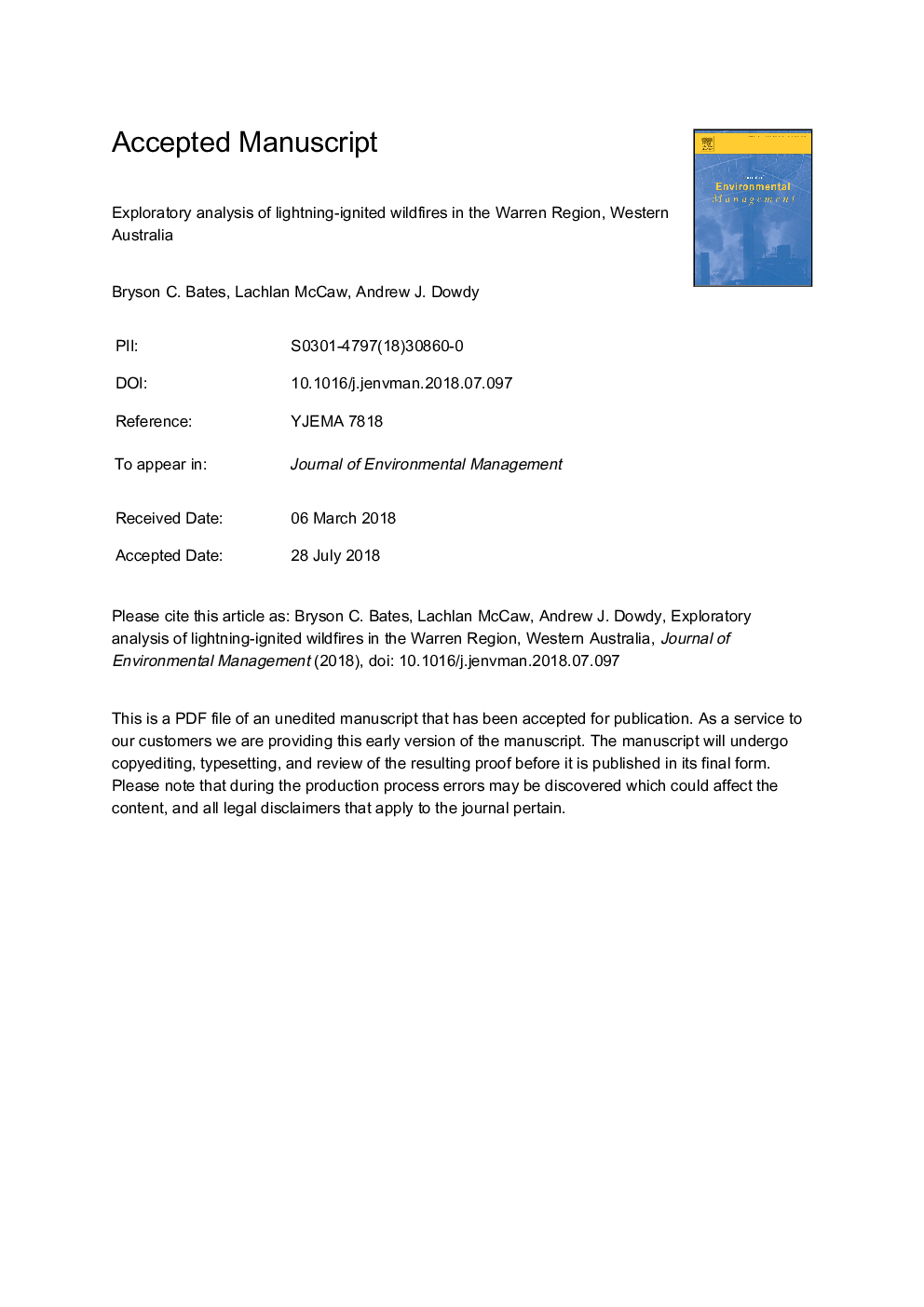| Article ID | Journal | Published Year | Pages | File Type |
|---|---|---|---|---|
| 7475695 | Journal of Environmental Management | 2018 | 42 Pages |
Abstract
An exploratory analysis of lightning-ignited wildfire data for the Warren Region of Western Australia was carried out for the period from April 1976 to December 2016. Temporal patterns in the series were examined in terms of characterizing the seasonal cycle, and detecting long-term trends and changes in seasonality over time. A generalized additive modelling approach was used to ensure that temporal features were determined by the data rather than a priori assumed mathematical forms (e.g. linear or low-order polynomial functions). The spatial organization of the data was evaluated using concepts from the theory of stochastic point processes. Results indicate a strong seasonality in the monthly lightning ignition series, the presence of a long-term trend and an interaction between trend and seasonality. There is also strong evidence of spatial variation in the number of ignitions per unit area in terms of location and distance from nearest ignition. Within the Warren Region, observation platforms for fire detection and reporting protocols have remained stable over the period of record, and changes in land use are unlikely to have altered the pattern of lightning ignition. Thus, the above results might reflect an interplay between: landscape attributes (e.g. vegetation classes, elevation, slope, aspect); changes in rainfall and fuel moisture; changes in fuel management practices; and, perhaps, an increase in the frequency of dry thunderstorms and fire weather conditions.
Related Topics
Physical Sciences and Engineering
Energy
Renewable Energy, Sustainability and the Environment
Authors
Bryson C. Bates, Lachlan McCaw, Andrew J. Dowdy,
